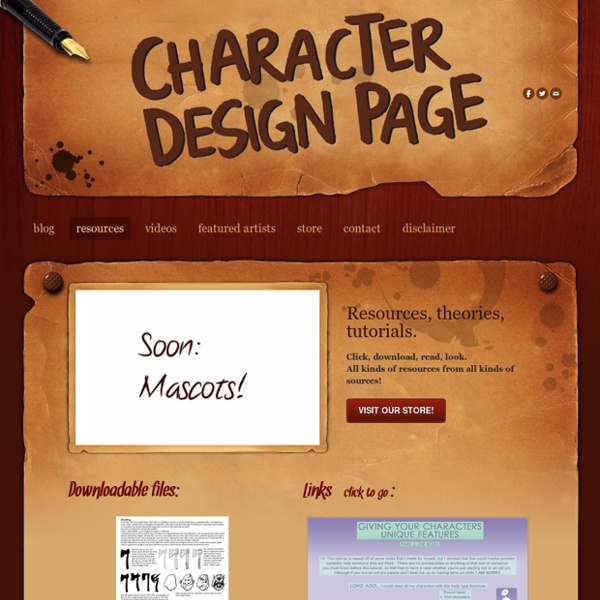



The Mad Art of Caricature! Arspiration Tips on Character and Costume Design by Aaron Diaz Character design is paramount to pretty much any kind of comic. Most comics have things in them, and some of those things are characters, and those characters better be well-designed. Design allows the artist to communicate essential information to the reader about a character, and a good design allows for versatility independent of minor details. #10 - Spider Jerusalem The crotchety protagonist from Warren Ellis’ spectacular cyberpunk series Transmetropolitan was designed by Darick Robertson. #9 - Thor Designed by the king of superhero comics, Jack Kirby, Thor succeeds in suggesting historical and mythological elements without being bound to them stylistically. #8 - Calvin & Hobbes I’m counting these guys as one design, as one really doesn’t work without the other. #7 - The One Electronic You didn’t think I wouldn’t have a robot, did you? #6 - The Elric Brothers #5 - Popeye Ugly as sin and built like a bag of hammers, Popeye’s visuals communicate so much about his character. #4 - Hellboy
Welcome to The Computer Graphics Society Movies In Color • This is part of a lecture I gave for the... Schoolism Colorful Animation Expressions Ed Benedict | Catalogue of Curiosities This post comes via Mark Christiansen’s blog as well as Yowp (both blogs are inexhaustible resources of 50s-60s era Hanna-Barbera). Apparently a mysterious stranger has recently posted black and white Hanna-Barbera show bumpers on You Tube. With layouts and animation by studio stalwarts like Ed Benedict, Art Lozzi and Ed Love, these bumpers are quick, funny scenarios, highlighting various characters in the Hanna-Barbera stable and packed full of great gags and wonderful compositions. Another highlight of these bumpers: the voice acting of Daws Butler, as everyone from Snagglepuss to Huckleberry Hound and Rojay North as the voice of Mr. Jinks*. *UPDATE! As a sidenote, I recently ran across the following model sheets that artist Bill Wray had posted, all of which were drawn by the incomparable Ed Benedict. Read Full Post » Read Full Post » Ed Benedict’s character designs are simply wonderful. Much of his work laid the foundation for the look of many Hanna Barbera’s most famous characters.
Print Art on Demand – Resources for Artists Print on demand (POD), sometimes called “publish on demand”, is a printing technology and business process in which new copies of an item are not printed until an order has been received. While it most often applies to books and DVDs, it also applies to the reproduction of artwork in a variety of ways. POD FOR ART Digital technology is ideally suited to publish small print runs of posters (often as a single copy) as and when they are needed. In addition, a significant number of the major art galleries around the world now offer a print on demand systems for the artwork under their control. HOW POD IS SUPPLIED There are two main categories of suppliers: - companies which are geared up to produce fine art prints and/or posters and/or greetings cards - companies which are primarily about printing books – but can be used for printing marketing material and other products based on artwork or art instruction For more details see the wikipedia article
More Thoughts on Layout Sorry it's been so long....Happy New Year. I hope the layout posts have been interesting. When I first went to CalArts, I was so convinced that I was going to be an animator that I paid no attention to learning about layout. Then, when I found my way into the story department, I really struggled to grasp how to (as I saw it back then) "fill out the background behind the characters". But over the years, I realized that layout is so much more than just a backdrop for characters. So I have a certain passion for layout because I had to work so hard to understand how it works. Anyway, a few more thoughts on layout (and how it relates to storyboarding): Create a clear "stage" for the action. This may seem obvious, but a big part of the layout's function is to create a "stage" for the action that's going to happen within the scene. This sounds easier than it is in execution. Here, a feeling of being trapped and desperate is achieved by putting the dogs under the stove. Here's one by Franquin.